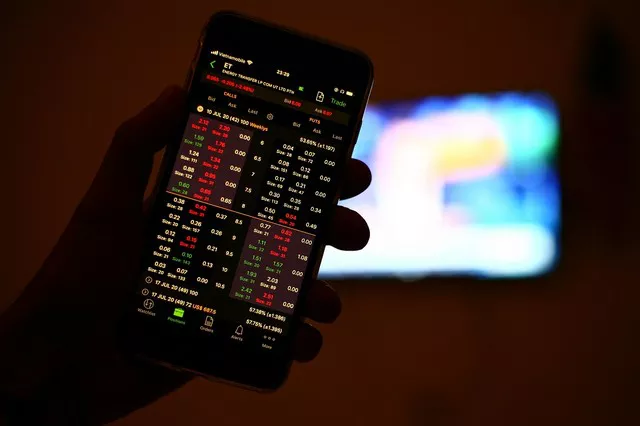In the dynamic world of finance, understanding various investment tools and instruments is essential for making informed decisions. One such financial product that has gained significant prominence is CME futures. CME Group, one of the world’s leading derivatives marketplaces, offers a wide range of futures contracts that enable investors to hedge against risks and speculate on price movements in various asset classes.
What Are CME Futures?
CME futures refer to futures contracts traded on the Chicago Mercantile Exchange (CME), which is a part of CME Group. These contracts are standardized agreements to buy or sell a specific quantity of an underlying asset at a predetermined price on a specified future date. CME Group offers futures contracts across various asset classes, including commodities, equities, interest rates, and foreign exchange.
Key Characteristics of CME Futures
CME futures contracts share several key characteristics:
Standardization: CME futures contracts have predefined specifications, including contract size, expiration date, and delivery terms. This standardization ensures uniformity and transparency in trading.
Leverage: Futures contracts typically require a fraction of the total contract value as initial margin, allowing traders to control a larger position size with a relatively small amount of capital. This leverage magnifies both gains and losses.
Expiration Date: Each futures contract has a specific expiration date, after which it becomes invalid. Traders can choose from various expiration months, depending on the contract.
Settlement Methods: CME futures contracts can be settled in different ways, including physical delivery (where the underlying asset is delivered) or cash settlement (where the contract’s value is settled in cash).
Types of CME Futures Contracts
CME Group offers a diverse range of futures contracts, making it a versatile marketplace for traders and investors. Some of the most commonly traded CME futures contracts include:
E-mini S&P 500 Futures: These contracts are based on the performance of the S&P 500 stock index and are among the most popular equity index futures in the world.
Crude Oil Futures: CME offers crude oil futures contracts, allowing traders to speculate on the price movements of crude oil, a vital commodity in global markets.
Eurodollar Futures: Eurodollar futures enable traders to speculate on the future interest rates of U.S. dollar deposits held in foreign banks. They are widely used for hedging interest rate risk.
Gold Futures: Gold futures contracts provide exposure to the price movements of gold, a precious metal considered a safe-haven asset.
Corn Futures: CME also offers agricultural futures contracts, such as corn futures, which enable traders to speculate on the price of agricultural commodities.
Hedging and Risk Management
One of the primary purposes of CME futures is to serve as risk management tools for market participants. Hedgers, such as producers and consumers of commodities, use futures contracts to protect themselves from adverse price movements. For example, a farmer may use corn futures to lock in a selling price for their crop, ensuring a certain level of income regardless of market fluctuations.
Speculation and Investment
In addition to hedgers, speculators play a vital role in CME futures markets. Speculators enter into futures contracts with the intention of profiting from price movements without the intention of taking physical delivery of the underlying asset. They provide liquidity to the market and facilitate price discovery.
Market Participants
CME futures markets are accessible to a wide range of participants, including:
Individual Traders: Retail traders can access CME futures through brokerage accounts. Many online brokerage firms offer access to these markets.
Institutional Investors: Institutional investors, such as hedge funds, mutual funds, and pension funds, use CME futures for portfolio diversification and risk management.
Commercial Entities: Businesses engaged in various industries, including agriculture, energy, and manufacturing, use CME futures for hedging purposes.
Risks Associated with CME Futures
While CME futures offer various benefits, they also come with inherent risks:
Price Risk: Futures prices can be highly volatile, leading to the potential for substantial gains or losses.
Leverage Risk: The use of leverage in futures trading can magnify both profits and losses, making it important to manage risk effectively.
Counterparty Risk: Futures contracts are obligations between two parties, and there is a risk of default by one of the parties if market conditions change drastically.
Rolling Contracts: Many futures contracts have expiration dates, requiring traders to roll over their positions to a new contract. This process can involve costs and complexity.
CME Futures in Global Finance
CME futures play a significant role in global finance and the broader economy. They provide a mechanism for price discovery and risk management, allowing businesses and investors to operate with a degree of certainty in an uncertain world. Additionally, the performance of CME futures often reflects broader economic trends, making them a valuable barometer of market sentiment and economic health.
Conclusion
In summary, CME futures are standardized agreements to buy or sell an underlying asset at a predetermined price on a specified future date. They serve as essential tools for risk management, speculation, and investment across various asset classes. Understanding CME futures and their role in financial markets can empower traders and investors to make informed decisions and navigate the complexities of the global economy. However, it’s crucial to approach futures trading with caution, recognizing the potential for both rewards and risks.

